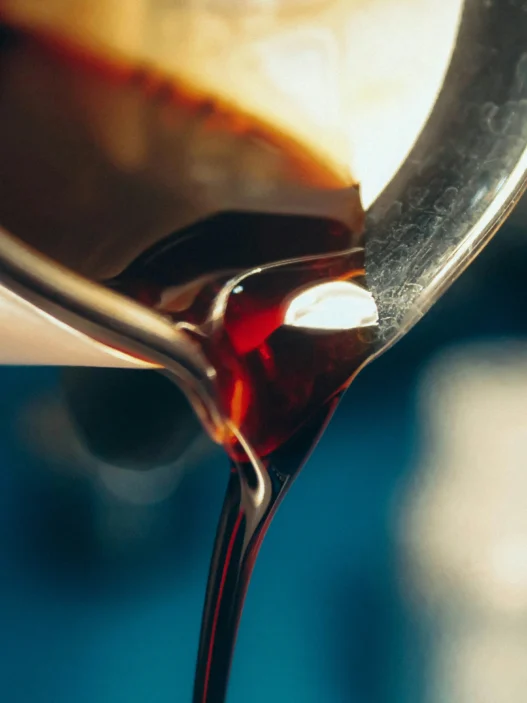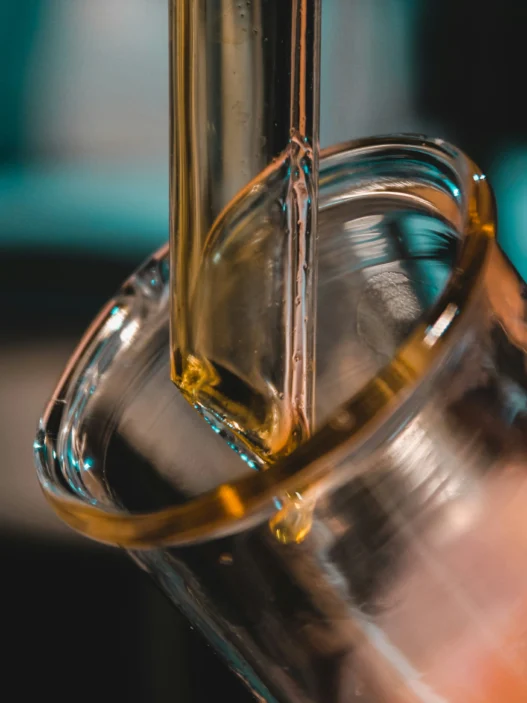1-Bromonaphthalene, a chemical compound derived from naphthalene, plays a crucial role in various industrial processes and applications. It is commonly used as a precursor in the manufacturing of pharmaceuticals, agrochemicals, and dyes. Additionally, 1-Bromonaphthalene serves as a useful reagent in organic synthesis, allowing for the creation of complex molecules with specific properties. While not directly relevant to everyday life for the average consumer, its significance in the chemical industry cannot be understated.
Table of Contents:
- 💡 Commercial Applications
- ⚗️ Chemical & Physical Properties
- 🏭 Production & Procurement
- ⚠️ Safety Considerations
- 🔬 Potential Research Directions
- 🧪 Related Compounds
💡 Commercial Applications
1-Bromonaphthalene is a chemical compound with various commercial and industrial applications. It is commonly used as a starting material in the synthesis of other organic compounds due to its reactivity. In the field of chemical manufacturing, 1-Bromonaphthalene is utilized in the production of pesticides, fluorescent dyes, and pharmaceutical intermediates.
In the pharmaceutical industry, 1-Bromonaphthalene plays a significant role in the development of various drugs and medications. It is used as a building block in the synthesis of certain pharmaceutical compounds, particularly those with anti-inflammatory and analgesic properties. Additionally, 1-Bromonaphthalene is employed in the manufacturing of specialty chemicals and research reagents for biological studies and drug discovery processes.
⚗️ Chemical & Physical Properties
1-Bromonaphthalene is a colorless liquid with a faint sweet odor. It is often used as a solvent in various chemical reactions due to its low toxicity and high boiling point.
With a molar mass of approximately 207.12 g/mol and a density of 1.49 g/cm^3, 1-Bromonaphthalene is heavier than typical food items. For example, water has a molar mass of 18.02 g/mol and a density of 1.0 g/cm^3.
1-Bromonaphthalene has a melting point of -24.5°C and a boiling point of 276°C. These values are much higher compared to common food items like water, which melts at 0°C and boils at 100°C.
1-Bromonaphthalene is insoluble in water but soluble in organic solvents like acetone and ether. It has a relatively high viscosity, making it less fluid compared to common food items like water and milk.
🏭 Production & Procurement
1-Bromonaphthalene is commonly produced by the bromination of naphthalene, a process that involves the replacement of a hydrogen atom with a bromine atom on the naphthalene molecule. This reaction is typically carried out using bromine in the presence of a catalyst, such as iron or aluminum bromide.
Once produced, 1-Bromonaphthalene can be procured from chemical suppliers or manufacturers that specialize in the production of organic compounds. It is typically available in liquid form and can be transported in sealed containers or drums to ensure its stability and prevent leakage during transit.
Transportation of 1-Bromonaphthalene is typically done through established chemical transport networks that comply with safety regulations and guidelines. Due to its hazardous nature, appropriate precautions must be taken during transportation, such as using specialized containers and vehicles equipped with safety features to prevent accidents and spills.
⚠️ Safety Considerations
Safety considerations for 1-Bromonaphthalene include its classification as a harmful substance that can cause skin and eye irritation. It is also flammable and should be handled with care to prevent accidental fires. Proper ventilation and personal protective equipment, such as gloves and goggles, should be used when working with 1-Bromonaphthalene to minimize exposure risks. Additionally, storage of this chemical should be in a cool, dry, well-ventilated area away from incompatible materials.
Hazard statements for 1-Bromonaphthalene include that it is harmful if swallowed, can cause skin and eye irritation, and is flammable. It is also harmful to aquatic life with long-lasting effects. Therefore, precautions should be taken to prevent any direct contact with this chemical and to avoid environmental contamination.
Precautionary statements for 1-Bromonaphthalene include wearing protective gloves, clothing, and eye protection when handling this chemical. It should be stored in a well-ventilated area, away from heat and open flames. In case of accidental exposure, rinse skin or eyes with plenty of water and seek medical attention if necessary. Proper disposal methods should also be followed to prevent environmental harm.
🔬 Potential Research Directions
Potential research directions for 1-Bromonaphthalene include exploring its reactivity towards various nucleophiles and electrophiles to elucidate its synthetic utility in organic chemistry. Additionally, investigating its potential as a precursor for the synthesis of novel pharmaceutical compounds or materials could lead to the discovery of new applications for this compound.
Studying the environmental impact of 1-Bromonaphthalene, particularly its persistence in the environment and potential for bioaccumulation in organisms, could provide valuable insights into its behavior in natural systems. Furthermore, examining its toxicity profile and potential health effects on humans and other organisms is essential for assessing the risks associated with its use and disposal.
Exploring the chemical and physical properties of 1-Bromonaphthalene, such as its solubility, melting point, and boiling point, could enhance our understanding of its behavior in different processes and systems. Additionally, investigating the potential for modifying its structure through derivatization reactions or functional group transformations could lead to the development of new derivatives with enhanced properties or reactivity.
🧪 Related Compounds
1-Bromonaphthalene belongs to a class of compounds known as halogenated naphthalenes. This class includes compounds such as 2-bromonaphthalene, which differs from 1-bromonaphthalene in the position of the bromine atom on the naphthalene ring. The molecular structure of 2-bromonaphthalene is nearly identical to that of 1-bromonaphthalene, with the only difference being the substitution of the hydrogen atom on the naphthalene ring with a bromine atom at the second carbon position.
Another compound in the halogenated naphthalenes class is 1-chloronaphthalene. Like 1-bromonaphthalene, 1-chloronaphthalene contains a halogen atom attached to the naphthalene ring, in this case chlorine instead of bromine. The molecular structure of 1-chloronaphthalene is similar to that of 1-bromonaphthalene, with the chlorine atom located at the first carbon position on the naphthalene ring.
Additionally, 1-iodonaphthalene is a compound that shares similarities with 1-bromonaphthalene. In this compound, the bromine atom in 1-bromonaphthalene is replaced with an iodine atom, resulting in a similar molecular structure with the iodine atom positioned at the first carbon position on the naphthalene ring. 1-iodonaphthalene is another example of a halogenated naphthalene compound with a slightly different halogen substituent, illustrating the diversity within this class of compounds.





